
Featured Blog | This community-written post highlights the best of what the game industry has to offer. Read more like it on the Game Developer Blogs or learn how to Submit Your Own Blog Post
Satoshi Nakai developing art for InvaderGames in Italy
Resident Evil concept and character artist collaborating on new Italian survival horror - read an interview on his life in games! (Warning: article contains nudity)

In Volume 2 of my book series, The Untold History of Japanese Game Developers, I interviewed veteran game artist Satoshi Nakai. In fact, he created the robot themed PC ENGINE GOLEM cover for Volume 2! If you'd like to buy a copy of Volume 2, please visit this page.
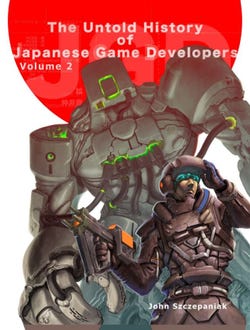
Satoshi Nakai was the mastermind behind the designs on shmup Gynoug / Wings of Wor, planner and artist on Assault Suits Valken / Cybernator and also pseudo-sequel Front Mission: Gun Hazard, plus concept artist for the Culdcept series (below) and character designer on Resident Evil: Code Veronica and the prequel RE:0. That's just a sample of his work, and his full portfolio is most impressive.
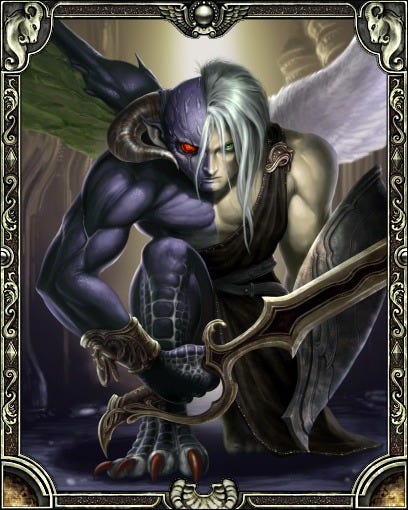
Satoshi Nakai's Illustration Museum (wayback archive)
Recently I was contacted by Resident Evil researcher and book writer Joel Welsh, with a press release for InvaderGames announcing its collaboration with Satoshi Nakai. The Italian game development studio hinted at working with several other international game designers, as yet unannounced, and that Nakai would be involved with its new survival horror game being developed. More details are promised to surface in the coming days.
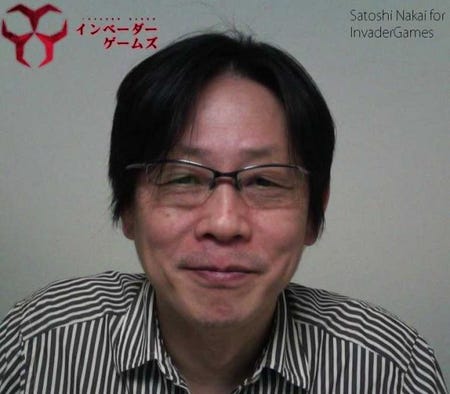
I find this exciting because two of Nakai's fields of expertise are giant mecha robots, and horror. Weird, creepy, disturbing, mind-curdling horror. Amazing body horror on a par with anything film director David Lynch has put out. Nakai knows horror. As InvaderGames stated: "We're sure that this collaboration will be essential for creating the desired world view which is inhabited by the most terrifying and realistic characters and enemies. Nakai-san's contribution to the Resident Evil series is defiantly unique, and we're sure he'll bring the same uniqueness to our title too."

What's interesting is that while InvaderGames is keenly aware of his Resident Evil work, it perhaps is not aware of Nakai's long lineage in horror, dating to the first game in his career, Last Armageddon. An unusual JRPG slightly reminiscent of Phantasy Star, where players control a party of demons, in a post-apocalyptic world where all humans have been wiped out, which are fighting alien robots. As Nakai stated during out interview: "This was my entry into the dark world of videogames. I was such a game virgin that I didn't even know what genres like 'RPG' meant. At this point I had already acquired my 'monster design factory' function."
Later horror themed titles include the unreleased Temple Master, Gynoug (featuring an infamous boss enemy), some concept art for Chou Aniki (not horror, but weird), Lord of Monsters, Culdcept (lots of monster characters), Contra Rebirth (gruesome bosses), an unreleased remake of something else, plus of course Resident Evil. Oh, and also covers for World of Warcraft magazine, featuring monstrous and otherworldly creatures! Many of these projects will be known, but not Nakai's involvement with them. As such, I am printing excerpts from my Nakai interview along with imagery. If you'd like to read a separate Resident Evil focused interview, with information on unreleased games, please visit Project Umbrella:
http://projectumbrella.net/articles/Satoshi-Nakai-Interview-Project-Umbrella
-----

仲井 覚
NAKAI, Satoshi
DOB: 24 February 1967
Birthplace: Hokkaido
Blood Type: O
Interview excerpt with Satoshi Nakai
JS: You mentioned having a part-time job as a waiter and also enjoying drawing, which is how you became involved with the industry?

SN: The first art assignment I did was for Brain Grey, for Last Armageddon. I designed many of the monsters or creatures. (above and below) It was a part-time job at their office. I drew many of the monsters, and also the event graphics used in cutscenes, such as the opening sequence. That was when I was 21 years old. Over a quarter century ago!

JS: Did you draw the pixel art on paper first?

SN: No, I entered it directly on the computer with a mouse. I think I used a mouse to draw up until Culdcept. Last Armageddon was my game debut. I did creature design.
JS: Afterwards you worked on the unreleased Temple Master at NCS / Masaya? (below)
SN: When I joined, the project was already underway. When I finished my work on Last Armageddon and joined NCS, they said, "Oh good, we were in need of a graphics person for this project."
JS: What genre was it?
SN: RPG. Just a normal RPG. Fantasy role-playing, but with a hint of science fiction. Now that I think about it, it's strange that the game was featured in magazines, even though very little of it was actually completed. Maybe NCS was trying to raise its stock prices. Since computer games came on floppy disks as opposed to ROM chips, the manufacturing and packaging took less time.

JS: Temple Master started in 1988, and magazines said the game would be released for the PC-9801 system in 1991. But that was not true...
SN: It wasn't true at all. I drew some monsters, but the project ended partway through. It was cancelled because the programming was not going well. I think some graphics like the monsters can be found on my old floppies, if we can restore them.
JS: Which computer did you use to create the graphics?
SN: The Sharp X68000. Ah yes, the character wearing the hood! That's about the only thing I remember. A character wearing a hooded cloak, similar to Assassin's Creed today.
JS: Let's discuss Gynoug on Mega Drive, your first major project. (above and below)
SN: I did all of the boss characters, and about half of the backgrounds in Gynoug.
JS: I wanted to ask about this. <shows picture> It's a bit suggestive, isn't it?
SN: Yes, it's a bit risqué.
JS: <laughs> How did you get this past the censors? Did you have to sneak it in?

SN: You're talking about this part, <points> aren't you? <laughs> I drew that in secret, and slapped it in. <laughs>
JS: And this is your cover for a magazine featuring Gynoug.
SN: This one appears on the final stage, sitting cross-legged. This image is a drawing that was used on the cover of MegaDrive-Fan at the time. During this period, I drew illustrations using a mouse on the Sharp X68000 computer. Back then, we would take data of this size and enlarge it for cover illustrations.
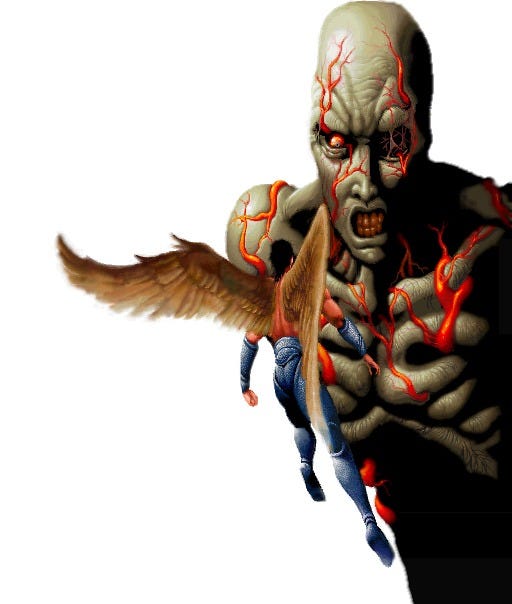
JS: The Gynoug bosses have a cool bio-mechanical style. Were you inspired by the Japanese body-horror film Tetsuo?
SN: No, but I was inspired by the David Lynch film Dune, such as the Baron Harkonnen character. I used to love the special effects makeup used in overseas films. I wasn't inspired by any one particular work, but I was influenced by horror films generally. Grotesque things like zombies just pop up immediately in my imagination. For example, this is something I came up with recently for an assignment. Maybe this looks familiar? This is work I did two years ago, for an unreleased title. <laughs> But I've gotten used to cancelled projects. It has happened so many times.
JS: Can you tell us more about this project?
SN: Unfortunately I am bound by various NDAs.
JS: You were later involved with the first Cho Aniki.
SN: Huh? Wha-? Cho Aniki is known even in the UK? That's craaaaazy!
JS: You did the package?
SN: Yes, the package illustration.

JS: The Cho Aniki series has a bit of an unusual reputation...
SN: I know! I created the main characters. Even in Japan, the games are seen as weird. Is there a word for bakage in English? Literally it means "stupid game".
JS: I've not heard bakage before, but in English for bad games we sometimes use the Japanese term kusoge...
SN: <bursts out laughing>
JS: ... but this, we don't use it for this game...
SN: Well, there is a baka genre here. Games which are intentionally silly.
JS: This is the first I've heard of it!
SN: For example, the main characters of Cho Aniki are named Adon and Samson. Do you know why?
JS: No. Why?
SN: There used to be a gay magazine in Japan called Samson. Supposedly there was also an Adon magazine. At the time when we were making the game, bodybuilding was extremely popular among the staff. When we would see each other first thing in the morning, we would pose for each other like bodybuilders. We were all crazy back then. <laughs>
JS: You were only involved in the first?
SN: Actually, I only created the artwork for the main characters. The stage backgrounds and enemies were all created by junior staff members who followed after me. <points to magazine> So like this picture is Thomas the Train. The junior staff competed with each other to create the interesting and fun designs.

JS: It seems they borrowed the character style of Gynoug.
SN: Yes, you're right. <shows magazine screen> These characters are named El & Topo, because the person who created them was a fan of the movie El Topo by cult film director Alejandro Jodorowsky. You can read about him and his movies if you search for "El Topo" and "The Holy Mountain" on the internet.
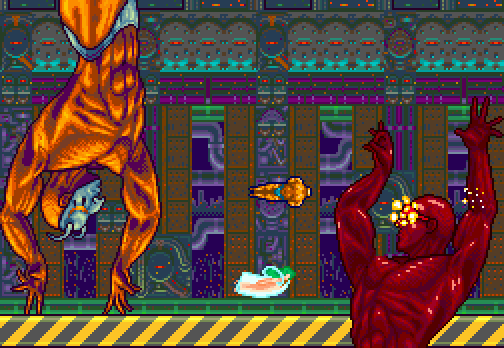
JS: Let's discuss Biohazard.
SN: <shows concept art> This one was never used. Mechanical Heart. I have a huge pile of unreleased work like this.
(See this page of artwork provided by Paul Birch of Project Umbrella)
JS: So which boss characters were not used?
SN: The unused ones? There are piles of them. Like this one, for example. <showing various materials> This is from before the zombies were introduced. These are plants. This was the design at one point. This one isn't a boss, but like this here, this is a plant monster. At this time, everything was based on plants. This one's a zombie.
JS: What do you feel was your most significant contribution to the series?
SN: My most significant contribution… I wonder! <laughs> The truth is, I am phenomenally terrible at playing Biohazard! I can't even walk straight! I'm like, dragging my head along the walls, leaving bloody streaks behind me. That's how bad I am! So perhaps my greatest accomplishment is being tortured to death by the very creatures that I designed?

JS: What are your future plans?
SN: Games sure come in a lot of different forms these days. We have PC games, browser-based games, games for home consoles, mobile and smartphones. Times change, and these things ebb and flow. I remember the Jaguar. That thing sure had a weird controller! I remember the Lynx. And I couldn't believe how expensive it was! The hardware comes and goes but the games stick around.
It's just like how "chiptune" music is still popular in this day and age. I'm sure all sorts of things will continue to change, but I don't think it's an exaggeration to say that digital games have already become as established as card games and board games. And that means I can still keep drawing my digital art!
END
If you'd like to read the rest of this interview, or indeed a whole series of interviews with Japanese game developers, please check out Volume 1 and Volume 2 of The Untold History of Japanese Game Developers, available on Amazon in print and digital forms.
http://www.hardcoregaming101.net/untoldhistory2/untoldhistory2.htm

Read more about:
Featured BlogsAbout the Author(s)
You May Also Like

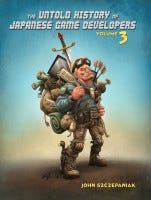





.jpeg?width=700&auto=webp&quality=80&disable=upscale)








